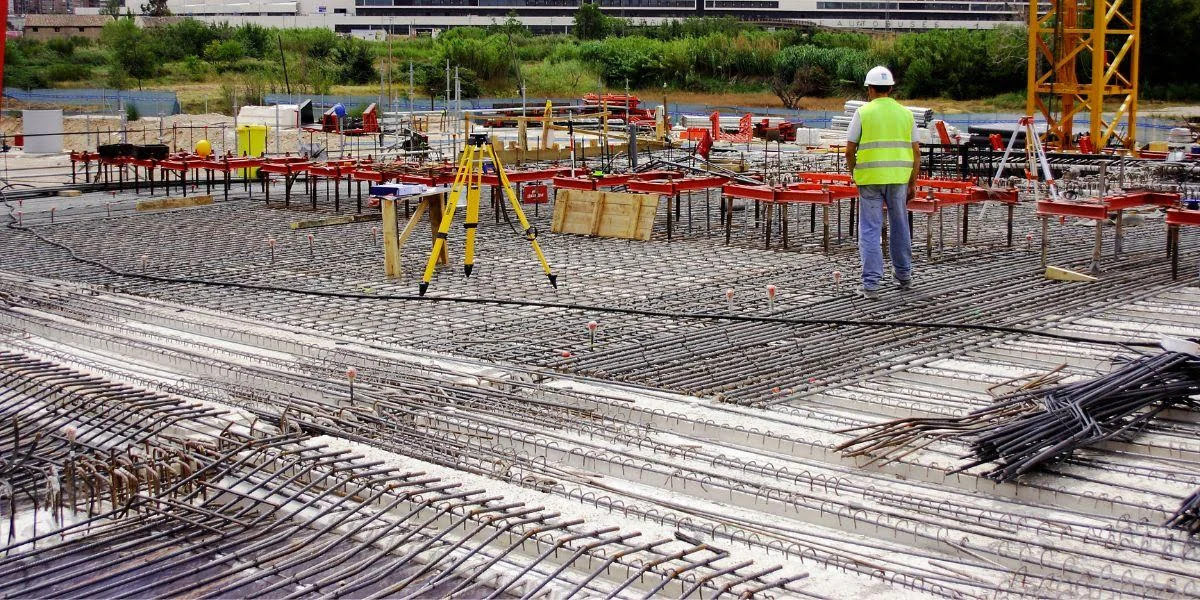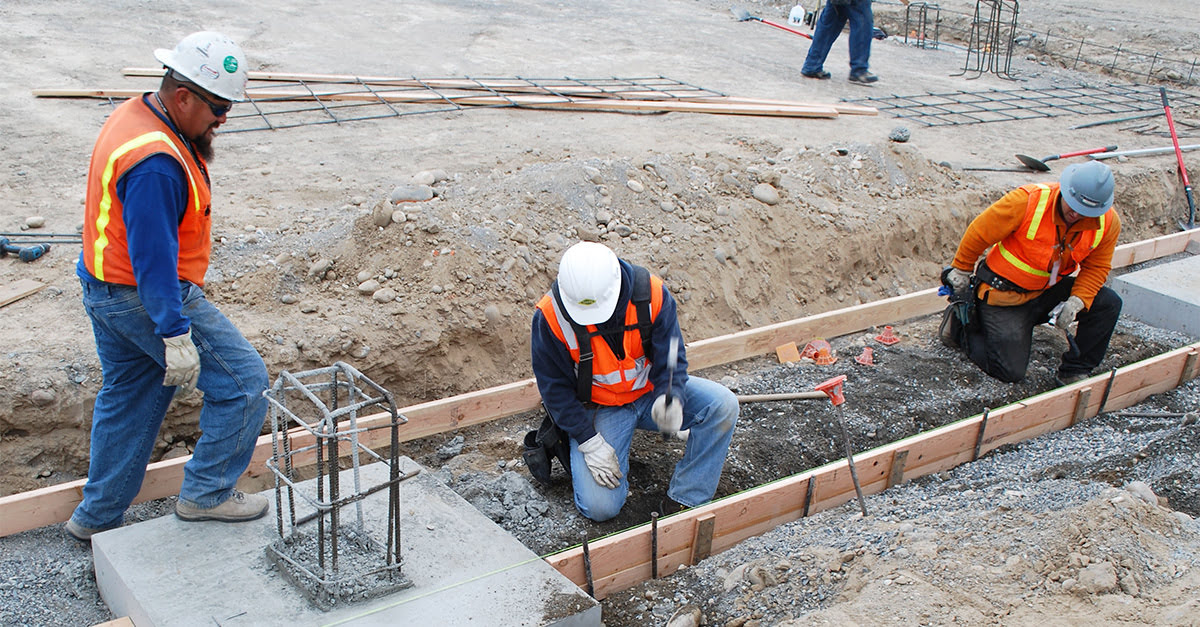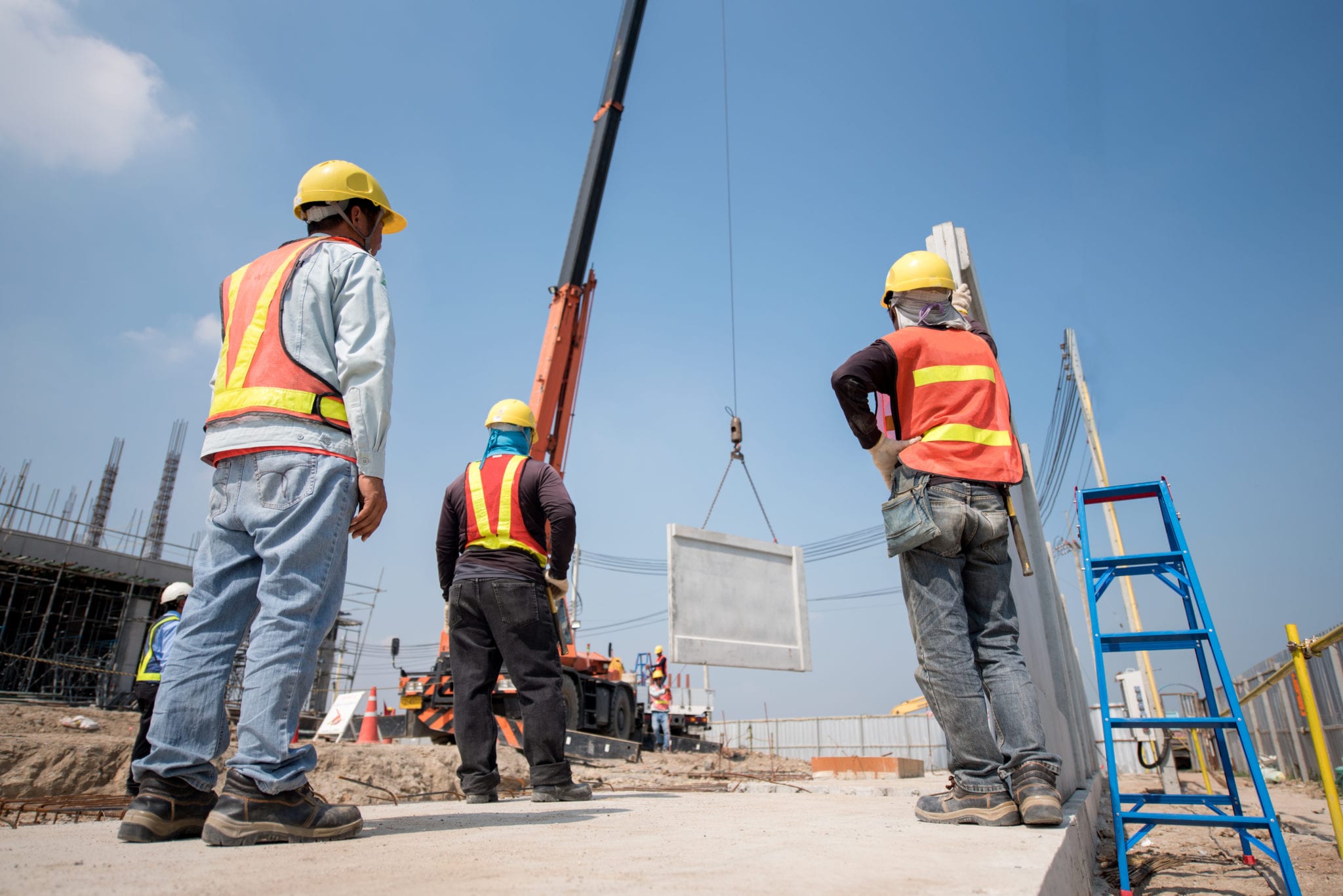Home>diy>Building & Construction>What Is A Scope Of Work In Construction


Building & Construction
What Is A Scope Of Work In Construction
Modified: January 3, 2024
Learn the importance of a scope of work in #buildingconstruction and how it defines the project, outlines deliverables, and sets expectations. Gain insights to enhance your construction experience.
(Many of the links in this article redirect to a specific reviewed product. Your purchase of these products through affiliate links helps to generate commission for Storables.com, at no extra cost. Learn more)
Introduction
Welcome to the fascinating world of construction! From towering skyscrapers to intricate residential homes, the field of construction encompasses a wide range of projects that shape our cities and communities. Within this intricate industry, there is a critical component that ensures projects are executed smoothly and successfully – the Scope of Work.
The Scope of Work, often referred to as SOW, is a crucial document that defines the parameters and requirements of a construction project. It outlines the specific tasks, responsibilities, and deliverables that need to be accomplished by the project team. In simpler terms, the Scope of Work acts as a roadmap, guiding the project from start to finish.
While the concept of a Scope of Work may seem straightforward, it plays a vital role in the success of construction projects. A clear and comprehensive SOW helps to prevent misunderstandings, minimizes conflicts, and ensures that all parties involved are on the same page. In this article, we will delve deeper into the definition, importance, and components of a Scope of Work in construction projects.
Key Takeaways:
- A well-defined Scope of Work (SOW) is crucial in construction, providing clarity, preventing scope creep, and enhancing communication for successful project outcomes.
- Effective development of a comprehensive SOW offers benefits such as improved communication, risk mitigation, budget control, and efficient resource management, contributing to successful construction projects.
Read more: What Is The Scope Of Construction Management
Definition of Scope of Work
The Scope of Work (SOW) is a formal document that outlines the specific tasks, activities, and deliverables required to complete a construction project. It defines the boundaries of the project, sets clear expectations, and establishes the scope within which the project team will operate. The SOW serves as a contract between the owner or client and the contractor or project team, ensuring that everyone involved understands the project requirements and objectives.
Essentially, the Scope of Work is a detailed description of what needs to be done, how it will be done, and what the final outcome should be. It provides a comprehensive overview of the project’s goals, objectives, and deliverables, along with any specific constraints or limitations that need to be considered.
In a construction project, the SOW covers various aspects, including the physical work to be accomplished, the required materials and equipment, the necessary permits and approvals, and any specific timelines or milestones. It may also include details on project management activities, such as scheduling, budgeting, and quality control.
Furthermore, the Scope of Work defines the roles and responsibilities of each party involved in the project. It clarifies the tasks that will be performed by the contractor, subcontractors, and other stakeholders, ensuring accountability and proper coordination.
It is important to note that the Scope of Work should be clearly defined and agreed upon by both the owner or client and the contractor. It should be specific enough to provide clarity and prevent misunderstandings, yet flexible enough to allow for any necessary adjustments or modifications during the course of the project.
Importance of Scope of Work in Construction Projects
The Scope of Work (SOW) is of utmost importance in construction projects for several reasons. Let’s explore some key reasons why a well-defined and thorough SOW is crucial:
- Clarity and Understanding: The SOW provides a clear understanding of the project requirements, objectives, and deliverables. It ensures that all parties involved, including the owner, contractor, subcontractors, and project team, have a shared understanding of what needs to be accomplished.
- Preventing Misunderstandings: By outlining the specific tasks and responsibilities, the SOW helps to prevent misunderstandings and miscommunication. It eliminates ambiguity and reduces the risk of assumptions, which can lead to costly mistakes and delays.
- Setting Expectations: The SOW sets clear expectations for all project stakeholders. It defines the project scope, including the timeframe, budget, quality standards, and any specific requirements. This clarity ensures that everyone is aligned and working towards the same goals.
- Minimizing Disputes: A well-defined SOW minimizes the risk of disputes and conflicts between the owner and the contractor. By clearly stating the project scope, deliverables, and responsibilities, any disagreements can be resolved by referencing the SOW, reducing the potential for costly legal battles.
- Cost Control: The SOW helps control costs by providing a detailed breakdown of the project requirements and deliverables. It enables accurate budget estimation and cost tracking throughout the project, preventing unexpected expenses and ensuring that the project stays within the allocated budget.
- Enhancing Project Management: The SOW serves as a valuable tool for project management. It helps in scheduling, resource allocation, and coordination of various activities, ensuring that the project stays on track and meets its milestones and deadlines.
Overall, the Scope of Work is a critical document that lays the foundation for a successful construction project. It promotes clarity, prevents misunderstandings, and establishes clear expectations for all parties involved. By investing time and effort in developing a comprehensive SOW, construction projects can minimize risks, maximize efficiency, and achieve successful outcomes.
Components of a Scope of Work
A well-structured Scope of Work (SOW) is composed of several key components that collectively define the project requirements and deliverables. Let’s explore the essential elements that make up a comprehensive SOW:
- Project Overview: This section provides an overview of the project, including its purpose, objectives, and the desired outcome. It sets the context for the rest of the document and ensures that all parties have a clear understanding of the project’s scope and goals.
- Scope Description: In this section, the specific tasks and activities that need to be carried out are detailed. It outlines the physical work to be performed, the materials required, and any other relevant specifications. This component helps to define the boundaries of the project and ensures that all necessary work is accounted for.
- Deliverables: This section lists the specific deliverables that the project team is expected to produce. Deliverables can include drawings, reports, prototypes, or any other tangible or intangible outputs that demonstrate completion of the project tasks.
- Timeline/Milestones: The timeline or milestones section highlights the key project milestones and their associated dates. It provides a timeline for the completion of various project tasks, allowing stakeholders to track progress and ensure that the project stays on schedule.
- Resource Allocation: This component outlines the resources needed to execute the project, including labor, equipment, and materials. It identifies the responsible parties for each resource and ensures that the necessary resources are available when needed.
- Quality Standards and Acceptance Criteria: In this section, the quality standards that need to be met and the criteria for accepting the completed work are defined. This ensures that the project team and the owner have a shared understanding of the level of quality expected and allows for proper quality control throughout the project.
- Risk Management: This part of the SOW identifies potential risks and outlines strategies to mitigate them. It provides a comprehensive assessment of the risks associated with the project and the steps that will be taken to minimize or eliminate those risks.
- Change Management: This component addresses how changes to the scope will be managed and handled. It establishes the process for requesting and approving changes, along with any impact they may have on the project timeline, budget, or resources.
- Communication Plan: The communication plan details how information will be shared among project stakeholders. It outlines the frequency and methods of communication, ensuring that all parties are kept informed and involved throughout the project.
Each of these components is crucial in creating a well-defined and comprehensive Scope of Work. By addressing these elements in the SOW, construction projects can be executed more efficiently, effectively, and with fewer misunderstandings.
Purpose of a Scope of Work
The Scope of Work (SOW) serves several important purposes in a construction project. Let’s explore the key reasons why a well-crafted SOW is essential:
- Clear Communication: The primary purpose of a SOW is to ensure clear and effective communication between all project stakeholders. It outlines the project requirements, objectives, and deliverables in a concise and understandable manner, minimizing the risk of misunderstandings and misinterpretations.
- Scope Definition: The SOW defines the scope of the project by clearly specifying the tasks, responsibilities, and deliverables expected from the construction team. It sets the boundaries of the project and helps avoid scope creep, which can lead to delays, budget overruns, and quality issues.
- Contractual Agreement: The SOW acts as a contractual agreement between the owner or client and the contractor. It serves as a legally binding document that outlines the obligations and responsibilities of each party, protecting the rights and interests of both the owner and the contractor.
- Resource Planning and Allocation: The SOW provides valuable information for resource planning and allocation. It identifies the necessary labor, equipment, materials, and other resources required to complete the project, allowing for efficient resource management and ensuring that the project team has the necessary resources at their disposal.
- Cost Control: A well-defined SOW helps control costs by clearly specifying the project requirements and deliverables. It allows for accurate cost estimation, budgeting, and monitoring throughout the project. By providing a clear understanding of the project scope and deliverables, the SOW minimizes the risk of cost overruns and ensures that the project stays within budget.
- Quality Assurance: The SOW plays a crucial role in ensuring quality assurance throughout the project. It establishes the quality standards and acceptance criteria that need to be met. By clearly defining the expectations for the final deliverables, the SOW helps maintain consistency, adherence to industry standards, and overall project quality.
- Risk Management: The SOW helps identify and manage potential risks associated with the project. It allows for a comprehensive assessment of risks and facilitates the development of strategies to mitigate or minimize them. By addressing risks upfront in the SOW, construction projects can proactively manage potential challenges and ensure project success.
- Project Control and Management: The SOW acts as a guiding document for project control and management. It establishes a framework for project scheduling, coordination, and progress tracking. By bringing clarity to the project tasks, deliverables, and timelines, the SOW enables effective project management and ensures that the project stays on track.
Overall, the purpose of a Scope of Work in construction projects is to provide a clear roadmap for the successful execution of the project. It fosters effective communication, defines project scope, establishes contractual terms, enables resource planning and cost control, ensures quality assurance, facilitates risk management, and supports efficient project management.
Read more: What Are MEP Works In Construction
Key Elements of a Scope of Work
A well-structured Scope of Work (SOW) includes several key elements that are essential for effectively defining and guiding a construction project. Let’s explore the key elements that make up a comprehensive SOW:
- Project Description: This element provides a brief overview of the project, including its purpose, location, and any relevant background information. It sets the context for the project and helps all stakeholders understand the overall scope and objectives.
- Scope Statement: The scope statement clearly defines the boundaries and deliverables of the project. It outlines what work will be performed and what specific outcomes are expected. This element ensures that all parties have a clear understanding of what is included and excluded from the project.
- Tasks and Activities: This component lists the specific tasks and activities that need to be completed to achieve project objectives. It provides a comprehensive breakdown of the work to be done, ensuring that all necessary activities are accounted for and properly assigned.
- Timeline and Milestones: The timeline and milestones section details the project’s anticipated duration and key milestones. It establishes the start and end dates for each phase or major activity, enabling stakeholders to track progress and ensure timely completion of the project.
- Roles and Responsibilities: This element outlines the roles and responsibilities of each project team member, including the owner, contractor, subcontractors, and other key stakeholders. It clarifies who is accountable for specific tasks and helps prevent confusion or overlap of responsibilities.
- Project Deliverables: This component identifies the specific deliverables that are expected from the project. It provides a clear description of the final output or result that will be produced, such as completed buildings, systems, or documents.
- Quality Standards: The quality standards element defines the expected level of quality for the project. It outlines the criteria and specifications that need to be met to ensure that the work meets the client’s expectations and industry standards.
- Communication Plan: The communication plan outlines how communication will be managed throughout the project. It identifies the key stakeholders, establishes the frequency and mode of communication, and ensures that the right information is shared with the right people at the right time.
- Risk Management: This element addresses the identification and management of project risks. It includes an assessment of potential risks and their potential impact, as well as strategies for mitigating or managing those risks.
- Change Management: The change management element outlines the process for handling changes to the project scope. It establishes the procedures for requesting, evaluating, and approving changes, ensuring that any modifications to the original scope are properly managed and documented.
These key elements collectively form a comprehensive Scope of Work that provides a clear, detailed, and well-defined plan for the construction project. By including these elements, the SOW sets the stage for successful project execution, effective communication, and efficient management of resources and expectations.
When creating a scope of work for a construction project, be sure to include a detailed description of the work to be performed, the materials and equipment to be used, the timeline for completion, and any specific requirements or standards that must be met. This will help ensure that all parties involved have a clear understanding of the project’s expectations.
Developing a Scope of Work
Developing a comprehensive and effective Scope of Work (SOW) is crucial for the successful execution of any construction project. The following steps outline the process of developing a well-defined and structured SOW:
- Project Analysis: Begin by conducting a thorough analysis of the project. Understand the project objectives, requirements, constraints, and any specific needs or challenges. Gather all the relevant information to ensure a comprehensive understanding of the project scope.
- Stakeholder Collaboration: Involve key stakeholders, including the owner, architect, engineers, and contractors, in the development of the SOW. Collaborate and gather input from each stakeholder to ensure that all perspectives and expectations are considered and aligned.
- Define Project Objectives: Clearly define the project objectives and goals. Identify the desired outcomes, deliverables, and milestones that need to be achieved. Ensure that the objectives are specific, measurable, achievable, realistic, and time-bound (SMART goals).
- Outline Project Scope: Define the boundaries of the project by outlining what is included and excluded from the scope. Clearly articulate the project’s limitations and any constraints, such as budget, time, or resources. This helps manage expectations and prevents scope creep.
- Breakdown Work Packages: Break down the project tasks into manageable work packages. Identify and define each task or activity required to complete the project. Consider the logical sequence, dependencies, and any specific requirements for each task.
- Assign Responsibilities: Assign responsibilities to the project team members. Clearly define the roles and responsibilities of each team member, including the owner’s representative, project manager, contractors, subcontractors, and other key stakeholders. Ensure clarity and accountability throughout the project.
- Establish Timeline: Develop a realistic project timeline that includes start and end dates for each task or milestone. Consider dependencies, critical path activities, and any external factors that may impact the timeline. Ensure that the timeline is feasible and aligned with project objectives.
- Define Quality Standards: Establish the quality standards and acceptance criteria for the project deliverables. Specify the required level of quality and any industry standards or regulations that need to be met. Ensure that quality control processes and inspections are incorporated into the SOW.
- Include Change Management: Incorporate change management procedures into the SOW. Define the process for requesting, evaluating, and approving changes to the scope. Establish clear guidelines on how changes will be handled to ensure transparency, control, and documentation.
- Review and Approval: Once the SOW is drafted, review it with all the key stakeholders. Seek their feedback, clarify any ambiguities, and make necessary revisions. Once consensus is reached, obtain formal approval from all parties involved before moving forward with the project.
Remember that developing a Scope of Work requires attention to detail, effective communication, and collaboration among all project stakeholders. By following these steps, you can create a robust SOW that serves as a guiding document for the successful completion of your construction project.
Scope of Work vs. Project Specifications
When it comes to planning and executing a construction project, two important documents that play a crucial role are the Scope of Work (SOW) and Project Specifications. While both documents provide essential guidance for the project, they serve different purposes and focus on distinct aspects. Let’s explore the key differences between the Scope of Work and Project Specifications:
Scope of Work (SOW):
The Scope of Work outlines the specific tasks, activities, responsibilities, and deliverables required to complete a construction project. It defines the boundaries and parameters within which the project will be executed. The SOW clarifies what needs to be done, how it will be done, and what the final outcome should be. It serves as a roadmap for the project team and ensures that all stakeholders have a shared understanding of the project scope and objectives.
The Scope of Work typically covers various aspects, including the physical work to be accomplished, the required materials and equipment, the necessary permits and approvals, and any specific timelines or milestones. It may also include project management activities, such as scheduling, budgeting, and quality control. The SOW focuses on the overall project scope, objectives, and deliverables.
Project Specifications:
Project Specifications, also known as Specs, provide detailed information about the materials, methods, and standards that will be used to complete specific tasks within the project. The specifications provide technical and precise details about the materials to be used, their quality, size, quantity, and installation requirements. They outline the specific technical requirements and standards that must be met for each component of the project.
The Project Specifications cover a wide range of details, including architectural, structural, electrical, mechanical, and other specialized aspects of the project. They focus on the technical specifications and standards for the project, ensuring compliance with safety regulations, building codes, industry standards, and client requirements. Specifications provide the necessary guidance for executing the project work and ensure consistency and conformity throughout the construction process.
Distinguishing Factors:
The Scope of Work and Project Specifications serve complementary roles in the construction project. While the SOW provides a high-level view of the project objectives, tasks, and deliverables, the Project Specifications offer in-depth technical details on how each task should be accomplished. The SOW sets the overall project direction, while the Specifications provide the specific instructions for achieving the desired outcome.
In summary, the Scope of Work defines the project scope and objectives, while the Project Specifications provide the technical details and standards for executing the project tasks. Both documents are important and should work in synergy to ensure the successful completion of a construction project.
Scope of Work vs. Contract Documents
When it comes to construction projects, there are two essential documents that play a crucial role in ensuring clarity and compliance: the Scope of Work (SOW) and the Contract Documents. While both documents serve distinct purposes, they work together to establish and govern the project’s terms and requirements. Let’s explore the key differences between the Scope of Work and Contract Documents:
Scope of Work (SOW):
The Scope of Work is a formal document that outlines the specific tasks, responsibilities, and deliverables required to complete a construction project. It defines the project scope and sets clear expectations for the project team. The SOW outlines what needs to be done, how it will be done, and the desired outcome.
The SOW provides a roadmap for the project, ensuring that all parties involved have a shared understanding of the project requirements and objectives. It helps prevent misunderstandings and ensures that the project stays on track by defining the boundaries and parameters of the work to be performed. The SOW typically addresses aspects such as project objectives, tasks, timeline, resource requirements, and deliverables.
Contract Documents:
The Contract Documents encompass a collection of legal and binding documents that form the contractual agreement between the owner or client and the contractor. These documents include various components such as the contract agreement, project plans, specifications, conditions of the contract, and any other supplementary documents.
The Contract Documents outline the legal and financial terms of the project, including the roles and responsibilities of each party, payment terms, project milestones, dispute resolution mechanisms, and other contractual obligations. These documents are typically prepared by the legal team or professional consultants and are subject to negotiation and review by both parties.
Distinguishing Factors:
While the Scope of Work and the Contract Documents may overlap in some areas, they serve different purposes in a construction project:
- The Scope of Work focuses on the detailed description of the project scope, tasks, and deliverables. It provides clarity and guidance to the project team.
- The Contract Documents, on the other hand, establish the legal framework for the project. They define the contractual obligations, terms of payment, and other legal aspects of the agreement.
- The Scope of Work primarily addresses the technical aspects of the project, while the Contract Documents mainly deal with the legal and financial aspects.
It is important to note that the Scope of Work is typically included as part of the Contract Documents. It becomes a reference document within the contractual agreement, outlining the specific requirements for the project’s execution.
In summary, the Scope of Work focuses on the technical details, objectives, and deliverables of the project, while the Contract Documents establish the legal framework and terms of the agreement. Both documents play essential roles in ensuring that the project is executed in accordance with the agreed-upon terms and requirements.
Read more: What Is Punch Work In Construction
Common Challenges in Creating a Scope of Work
Creating a thorough and well-defined Scope of Work (SOW) is essential for the success of a construction project. However, there are several common challenges that project teams may face when developing a SOW. Let’s explore some of these challenges and how to address them:
- Lack of Clarity: One of the most common challenges is a lack of clarity in defining the project scope. This can occur when the project requirements are not clearly communicated or when there are multiple stakeholders with different expectations. To overcome this challenge, it is crucial to establish open and transparent communication with all project stakeholders. Regular meetings, detailed documentation, and active collaboration can help clarify expectations and ensure a comprehensive understanding of the project scope.
- Scope Creep: Scope creep refers to uncontrolled expansion of the project scope beyond its original parameters. It can occur when additional requirements or changes are introduced without proper evaluation. To prevent scope creep, a robust change management process should be established. All changes should be thoroughly evaluated and documented, with their impact on the project timeline, budget, and other resources carefully assessed. Regular reviews and approvals should be conducted to ensure that any changes to the scope are properly managed and controlled.
- Inadequate Stakeholder Engagement: Engaging all relevant stakeholders in the development of the SOW is essential. Failing to involve key stakeholders can lead to misunderstandings, conflicting expectations, and potential delays. It is crucial to identify and engage all stakeholders early in the process to gather their input and ensure their needs and requirements are considered. Regular meetings, workshops, and ongoing communication can help foster collaboration and alignment.
- Unclear or Inconsistent Objectives: Setting clear project objectives is crucial for developing an effective SOW. If the project objectives are unclear or inconsistent, it can lead to a poorly defined scope. To mitigate this challenge, conduct thorough project planning and analysis before creating the SOW. Clearly articulate the project goals, outcomes, and deliverables, and ensure that they align with the overall project objectives. Regularly review and revise the objectives as needed throughout the project lifecycle.
- Insufficient Detail: Another common challenge is the lack of sufficient detail in the SOW. A vague or incomplete document may lead to confusion and misunderstandings during the project execution. To address this challenge, take the time to thoroughly define each task, activity, and deliverable in the SOW. Include specific requirements, timelines, quality standards, and any necessary supporting documentation. Involve subject matter experts to ensure accuracy and completeness in capturing the necessary details.
- Communication Breakdown: Poor communication can hinder the development of a comprehensive SOW. Miscommunication or inadequate sharing of information can lead to gaps in the scope or conflicting expectations. To overcome this challenge, establish effective communication channels among all project stakeholders. Ensure that project team members have a clear understanding of their roles and responsibilities and that information is shared in a timely and transparent manner. Regularly schedule meetings and provide a platform for questions, clarifications, and regular updates on the SOW development process.
By being aware of these common challenges and taking proactive measures to address them, project teams can develop a robust and well-defined Scope of Work. Clear communication, stakeholder engagement, attention to detail, and effective change management are keys to successfully overcome these challenges and ensure the successful execution of the construction project.
Benefits of a Well-Defined Scope of Work
A well-defined Scope of Work (SOW) is a critical component for the success of a construction project. It provides numerous benefits that contribute to smooth project execution, effective communication, and overall project satisfaction. Let’s explore some of the key benefits of a well-defined SOW:
- Clear Project Understanding: A well-defined SOW ensures a clear and shared understanding of the project scope, objectives, and deliverables among all project stakeholders. It eliminates confusion and prevents misunderstandings by clearly defining what needs to be done, how it will be done, and the expected outcomes.
- Improved Communication: A well-crafted SOW acts as a communication tool, ensuring that all project team members, including the owner, contractors, subcontractors, and suppliers, are on the same page. It facilitates effective communication by providing a structured framework for discussing project objectives, requirements, and progress.
- Prevention of Scope Creep: A well-defined SOW helps prevent scope creep, which occurs when the project scope expands beyond its original parameters. By clearly outlining the project boundaries, deliverables, and objectives, a comprehensive SOW serves as a reference document to evaluate and manage changes effectively.
- Risk Mitigation: A well-defined SOW contributes to better risk management. It helps identify potential risks, assess their impact on the project, and develop appropriate mitigation strategies. By addressing risks upfront in the SOW, the project team can develop contingency plans and minimize the likelihood and impact of unforeseen events.
- Budget Control: A well-defined SOW enables better cost control by providing clarity on the project requirements and deliverables. It ensures that all budget considerations are accounted for and that there is a clear understanding of the resources and materials needed. This helps prevent cost overruns and ensures that the project stays within the allocated budget.
- Efficient Resource Management: With a well-defined SOW, resource management becomes more efficient. The SOW outlines the required labor, equipment, materials, and other resources, ensuring that the necessary resources are allocated appropriately. It prevents resource shortages and ensures that the project team has the tools and materials needed to complete the project on time and within budget.
- Enhanced Quality Control: A well-defined SOW sets clear expectations for quality standards and acceptance criteria. It establishes the desired level of quality and ensures that all project deliverables meet those standards. Regular inspections and quality control procedures can be integrated into the project execution based on the guidelines provided in the SOW.
- Facilitated Project Monitoring and Control: A well-defined SOW provides a structured framework for project monitoring and control. The SOW sets milestones, timelines, and deliverables, allowing project managers to track progress, identify deviations, and take corrective actions. This helps keep the project on track and ensures that objectives are met within the specified timeframe.
In summary, a well-defined Scope of Work offers numerous benefits, including clear project understanding, improved communication, prevention of scope creep, risk mitigation, budget control, efficient resource management, enhanced quality control, and facilitated project monitoring and control. By investing time and effort into creating a comprehensive SOW, construction projects can enjoy these benefits and increase the chances of successful project outcomes.
Conclusion
A well-defined Scope of Work (SOW) is a vital component in the construction industry, laying the foundation for successful project execution. The SOW serves as a roadmap, guiding the project team and stakeholders towards accomplishing the project’s objectives. It encompasses the specific tasks, activities, responsibilities, and deliverables necessary to complete the project, ensuring clarity, alignment, and effective communication throughout the project’s lifecycle.
Throughout this article, we have explored the definition, importance, and key components of a Scope of Work. We have discussed how it differs from project specifications and contract documents, highlighting the critical role it plays in establishing project scope, managing expectations, and promoting effective project management.
We have also highlighted some common challenges that project teams may face when creating a SOW, such as lack of clarity, scope creep, and inadequate stakeholder engagement. Learning how to address these challenges is crucial to developing a comprehensive and well-crafted SOW that enables successful project outcomes.
A well-defined SOW provides various benefits, including clear project understanding, improved communication, prevention of scope creep, effective risk management, budget control, efficient resource management, enhanced quality control, and facilitated project monitoring and control. By investing time and effort in developing a robust SOW, construction projects can minimize risks, improve efficiency, and enhance overall project success.
In conclusion, a well-defined Scope of Work serves as the guiding document for construction projects, ensuring that all project stakeholders are aligned, tasks and responsibilities are clearly defined, and expectations are managed effectively. It provides the framework for successful project execution and serves as a cornerstone of effective project management. By prioritizing the development of a comprehensive and well-structured SOW, construction professionals can pave the way for smooth operations and successful project outcomes.
Frequently Asked Questions about What Is A Scope Of Work In Construction
Was this page helpful?
At Storables.com, we guarantee accurate and reliable information. Our content, validated by Expert Board Contributors, is crafted following stringent Editorial Policies. We're committed to providing you with well-researched, expert-backed insights for all your informational needs.














0 thoughts on “What Is A Scope Of Work In Construction”